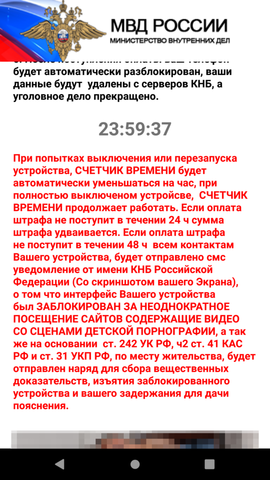A new strain of mobile ransomware is abusing the "incoming call" notification mechanisms and the "Home" button to lock screens on Android devices.
Under the name AndroidOS / MalLocker.B, ransomware is hidden in Android applications that are offered for download from online forums and third party websites.
Like most executives ransomware for Android, το MalLocker.B δεν κρυπτογραφεί πραγματικά τα archives of the victim, but prevents access to the rest of the phone.
Once installed, the ransomware takes over the phone's screen and prevents the user from leaving the screen that displays the note about ransom. The note is designed to look like a message from local law enforcement and tells users that they have committed a crime and must pay a fine.
The ransomware uses a two-part mechanism to display the ransom note.

The first part abuses the "incoming call" alert. This is the feature that is enabled for incoming calls displays details from the caller and MalLocker. Uses it to display a window that covers the entire area of the screen with details about the incoming call.
The second part abuses the "onUserLeaveHint ()" function. This feature is used when users want to push an application into the background to switch to a new application. Activated when you press the Home or Recents buttons. MalLocker.B abuses this feature to reset the ransom note and prevent the user from changing screen or opening another application.





